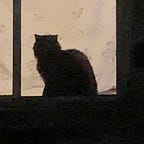rgbDesigner Tutorial #1
rgbDesigner: Fundamentals
Getting a quick start with rgbDesigner, our colour design app for iPad.
If you’d like to download the app before we get started, you can do that here. The app is a monthly subscription and comes with a 7 day free trial.
You’ve just downloaded rgbDesigner, you’ve signed up for the free trial and you’re wondering where to start.
Along the bottom of the screen, you can see four tabs:
Home • Palettes • Gradients • Images
You start on the Home, which gives you access to the three creation areas, settings, advanced sharing and links to relevant media.
My goal today is to create some Concentric Squares with colours from nature. The workflow, from start to finish, took about a minute.
The first thing you want to do is access the Palettes Tab:
Palettes
An rgbDesigner palette consists of 32 colours ( A ). The colour tile with the green outline is the current colour. Any colour you select will be populated into this colour. Tap on a different tile to make it the current colour.
The Selection Controller ( B ) offers six options. We’re going to use the Image option. Select it and the picture icon ( C ) appears. Tap on it and select a picture from your Photos. Tap down on the image and an arrow appears. Inside the arrow is the selected colour. Lift your finger when you’re happy with the colour.
I’ve selected my first colour and I’m going to use this as the basis for my palette, so I’m going to use the Fill ( D ) to start the palette. Now I’m going to adding some individual colours. You can add as many or as few as you like. If you like the palette, you can save it ( E ). As this picture is from my biodiversity patch, I’m going to call it Biodiversity Green 1.
Now we’ve got some colours, let’s turn it into a gradient.
Gradients
An rgbDesigner gradient is a collection of 256 colours numbered from 0–255. Gradients are what you use to create Images. The simplest way to create a Gradient is to use a Gradient Pattern ( A ). The Gradient will be generated from the current Palette, the one with the Green Dot above it ( B )
With the Gradient created we can now generate an Image.
Images
First select the type of Image you’d like to create ( A ). Notice how the current Gradient is displayed next to the Image Generator Type. I’m going to select Concentric Squares. There are eight controls here ( B ), but I’m only going to worry about two: Colours and Thickness. You can either use the slider to change the value, or you can tap on the value to bring up the keypad. Note: The keypad shows to minimum ( C ) and maximum ( D ) value for each parameter. I’ve changed the colours (the number of colours per group of squares) to 3 and the thickness (in pixels) that each square increases by.
Now, just hit the Apply ( E ) button and the Image is created. You can keep hitting the Apply button and a new randomised version will be created.
Once you’re happy with the image, you can export it to your Photos ( F ).
Thanks for reading. This is our first rgbDesigner tutorial so I’d love to hear your comments.
If you’d like to keep up with the tutorials give our publication, The RGB Chronicles a follow.
If you’d like to see the latest activity you can follow us on X (Twitter) or Instagram
I’d you’d like to learn more about how I got my start with digital graphics, you may enjoy this:
